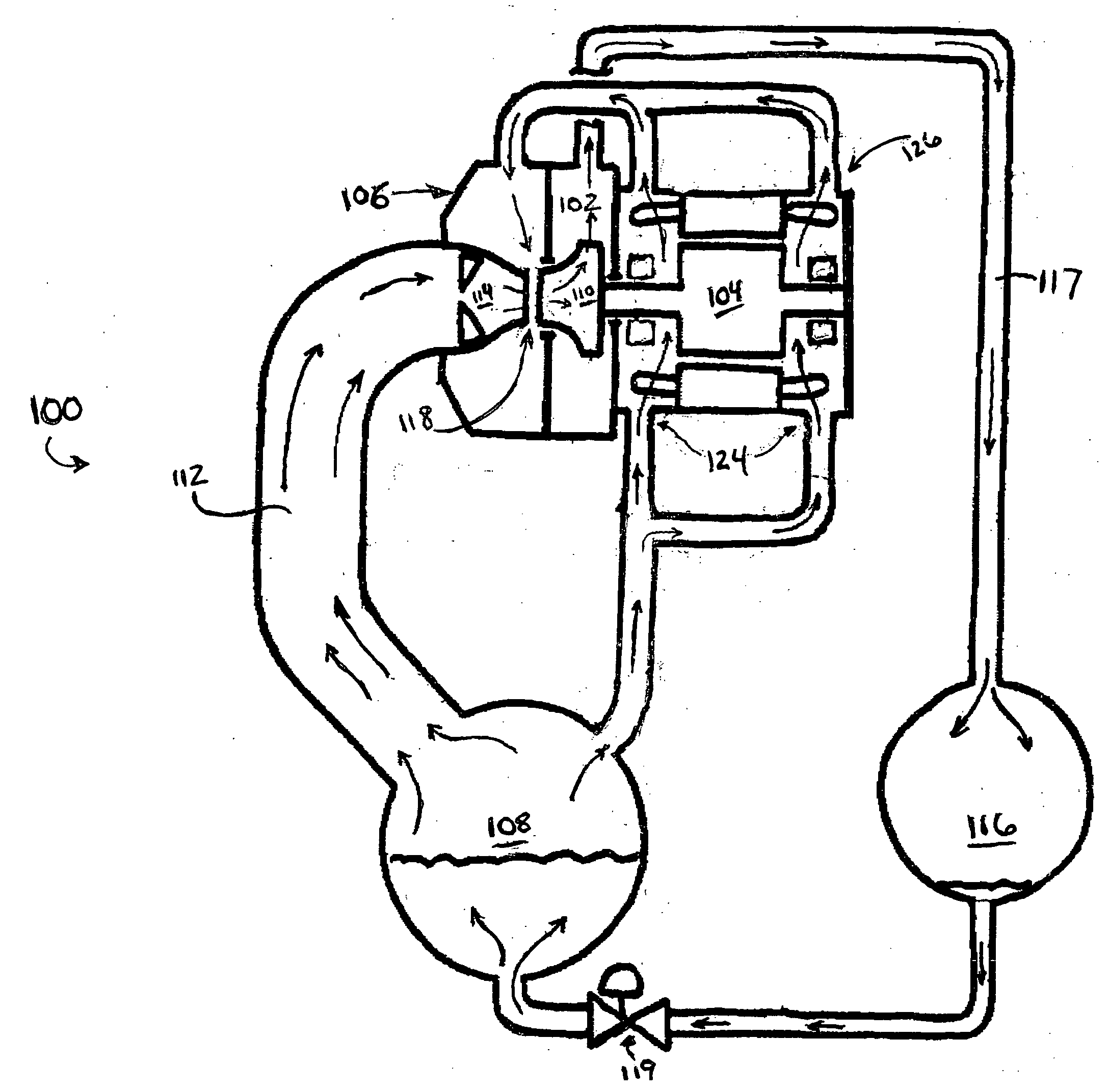System and method for cooling a compressor motor
a compressor motor and cooling system technology, applied in the field of system and method for improving the can solve the problems of sacrificing energy efficiency, difficult design of gas compression system, and difficulty in motor cooling of compressor motors in refrigeration systems, especially large-capacity systems, so as to improve the cooling of motors, improve the cooling effect, and improve the cooling effect of motors
- Summary
- Abstract
- Description
- Claims
- Application Information
AI Technical Summary
Benefits of technology
Problems solved by technology
Method used
Image
Examples
Embodiment Construction
[0029] The invention provides optimized cooling of hermetic motors using low-pressure gas, such as uncompressed gas. The invention provides motor cooling by a gas sweep, with the gas source located in the low-pressure side of the compression circuit. In a refrigeration circuit application, the uncompressed refrigerant gas is preferably sourced from the evaporator, and is drawn into the motor housing, through or around the motor (or both), by a pressure reduction created at the suction inlet to the compressor. Alternatively, the refrigerant gas source is the suction pipe or a suction liquid trap.
[0030] The invention can provide for additional motor cooling by circulation of liquid coolant through a motor cooling jacket or through chambers provided in the motor housing. In refrigeration system embodiments, the circulating liquid can be liquid refrigerant, which liquid refrigerant can be injected directly into the motor housing, and any combination of these features can supplement the...
PUM
 Login to View More
Login to View More Abstract
Description
Claims
Application Information
 Login to View More
Login to View More - R&D
- Intellectual Property
- Life Sciences
- Materials
- Tech Scout
- Unparalleled Data Quality
- Higher Quality Content
- 60% Fewer Hallucinations
Browse by: Latest US Patents, China's latest patents, Technical Efficacy Thesaurus, Application Domain, Technology Topic, Popular Technical Reports.
© 2025 PatSnap. All rights reserved.Legal|Privacy policy|Modern Slavery Act Transparency Statement|Sitemap|About US| Contact US: help@patsnap.com



